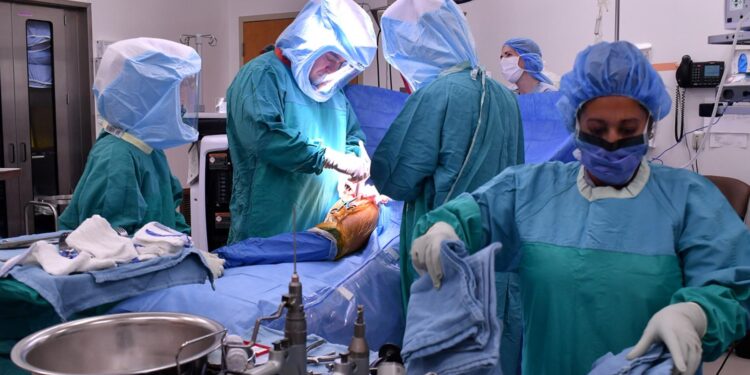In the evolving landscape of medical innovation, precision and patient care have found a powerful ally in technology. At the forefront of this advancement, Emory orthopaedic surgeons are leveraging cutting-edge robotic technology to revolutionize knee replacement surgery. By integrating robotics into the operating room, they are not only enhancing surgical accuracy but also redefining recovery experiences for patients. This fusion of human expertise and robotic precision marks a significant stride forward in orthopaedic care, promising improved outcomes and a new standard for knee replacement procedures.
Advancing Precision in Knee Replacement Through Robotic Assistance
Emory orthopaedic surgeons are pioneering a new era of accuracy in knee replacement surgeries by integrating advanced robotic systems into their procedures. This technology empowers surgeons to create patient-specific surgical plans, ensuring implants are positioned with unmatched precision. The result is not only improved joint alignment but also a significant reduction in post-operative complications and faster rehabilitation times. With the robot’s real-time feedback, the surgical team can make micro-adjustments during the operation, tailoring each replacement to the unique anatomy of the patient.
The benefits of this cutting-edge approach include:
- Enhanced implant durability: Optimized placement leads to longer-lasting joint function.
- Minimized soft tissue damage: Robotic guidance enables less invasive maneuvers.
- Consistent surgical outcomes: Reduced variability between procedures enhances patient confidence.
| Feature | Traditional Surgery | Robotic-Assisted Surgery |
|---|---|---|
| Precision of Implant Placement | Moderate | High |
| Recovery Time | 6-12 weeks | 4-8 weeks |
| Soft Tissue Preservation | Variable | Optimized |
Enhancing Patient Outcomes with Innovative Surgical Techniques
Emory orthopaedic surgeons are pioneering a transformative approach in knee replacement procedures by integrating advanced robotic technology into the operating room. This cutting-edge system allows for unparalleled precision during surgery, enabling surgeons to tailor every movement to the unique anatomy of each patient. The result is not just a replacement but a personalized reconstruction that optimizes joint alignment and soft tissue balance, significantly improving recovery times and long-term function.
Patients benefit from a variety of enhanced advantages with this innovative method, such as:
- Reduced surgical trauma through smaller, more accurate incisions
- Improved implant positioning leading to better joint stability
- Minimized post-operative pain facilitating quicker mobilization
- Enhanced durability of the prosthetic due to precision alignment
To illustrate the impact, consider the comparative recovery metrics below:
| Recovery Aspect | Traditional Surgery | Robotic-Assisted Surgery | ||||||||||||||
|---|---|---|---|---|---|---|---|---|---|---|---|---|---|---|---|---|
| Hospital Stay | 4-5 days | 2-3 days | ||||||||||||||
| Physical Therapy Duration | 8-12 weeks | 4-6 weeks | ||||||||||||||
| Pain Medication Use | Best Practices for Integrating Robotics in Orthopaedic Surgery
Successful integration of robotics in orthopaedic surgery hinges on a meticulous blend of technology and human expertise. Surgeons must engage in rigorous training programs to master the robotic systems, ensuring precise navigation and enhanced accuracy during knee replacement procedures. Continuous collaboration between the surgical team and technology developers fosters advancements that tailor robotic solutions to patient-specific needs, improving clinical outcomes and reducing recovery times. Implementing robotics also requires a structured workflow that incorporates preoperative planning, real-time intraoperative adjustments, and postoperative evaluation. Adopting these best practices allows seamless coordination and maximizes the benefits of robotic assistance. Key factors to consider include:
Closing RemarksAs robotic technology continues to reshape the landscape of knee replacement surgery, Emory orthopaedic surgeons stand at the forefront of this transformative wave. By blending precision robotics with expert surgical skill, they are not only enhancing the accuracy of procedures but also redefining patient recovery experiences. This innovation marks a promising step forward in orthopaedic care-one where technology and human expertise join forces to restore mobility and improve quality of life, one knee at a time. |































